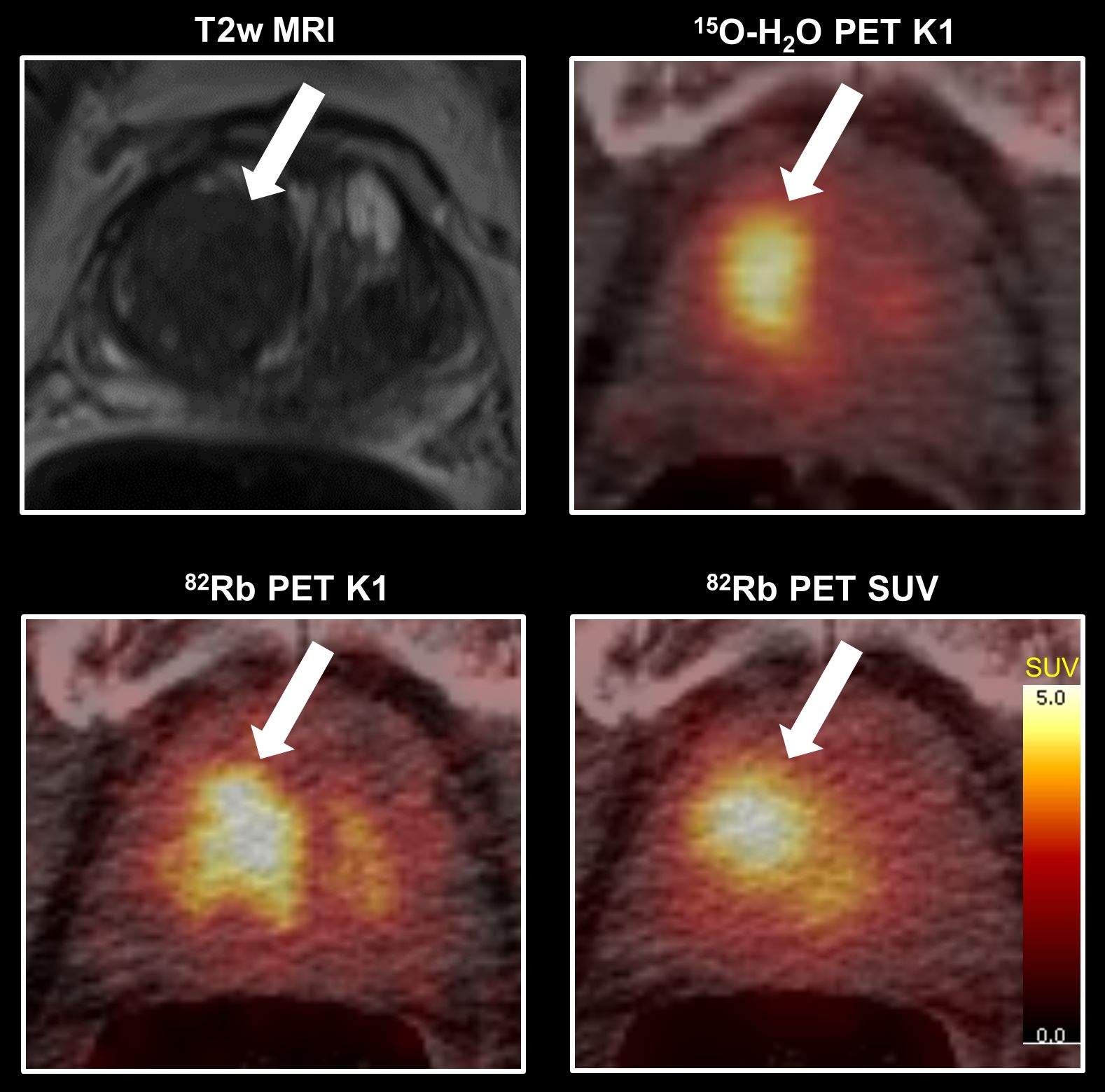Nephro-urology research
Figure published in Journal of Nuclear Medicine. 2019 Aug;60(8):1059-1065
Kirsten Bouchelouche, August 2020
The Department of Nuclear Medicine & PET Centre is a core facility for imaging of nephro-urology diseases including cancer, and the aim is to provide state-of-the-art diagnostic services to patients. We continually seek to improve diagnosis and treatments based on scientific evidence.
Focusing on a multidisciplinary approach to patient care and research, we have excellent collaboration with the departments within urology, nephrology, pediatrics and oncology at Aarhus University Hospital, and PET Centre in Uppsala.
In our department we have 3 cyclotrons and a highly specialized radiochemistry laboratory making it possible to work with both established and up-front PET-agents and methods. Furthermore, the department has 5 PET/CT scanners (including 4 digital PET/CT), PET/MR and small animal facilities.
For clinical routine we perform FDG PET/CT for clinical staging and evaluation of high risk bladder cancer, upper urothelial cancer and penile cancer; in prostate cancer we use PSMA PET/CT.
Research
The aim of our nephro-urology research is to develop, advance and evaluate new and established nuclear molecular imaging methods to optimize and improve the diagnosis, management and clinical outcome of patients. The studies are carried out together with basic scientists, dedicated radiochemists and physicists, experienced specialized clinical scientists and other professionals, and many clinical and preclinical nephro-urology research activities are ongoing.
Recently, we have validated PET with 82Rb and 15O-water for absolute quantification of tumor perfusion in prostate cancer, and several projects focus on tumor perfusion in prostate and bladder cancer; both with PET/CT and PET/MR. Other PET agents used in nephro-urology research include PSMA labelled with 68Ga and 18F, and 11C-methionin. Furthermore, we perform preclinical PET studies with rats and pigs in nephro-urology research settings.
